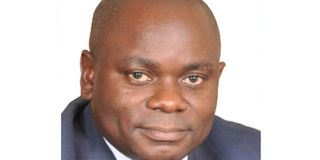What to do when Bank of Uganda makes losses

Should Ugandans be worried by the recent pronouncement that Bank of Uganda (BoU) has made losses for the last 10 years?
I think we should not have sleepless nights over that diversionary issue.
All that matters, from a macroeconomic point of view, is whether BoU has the ability to do its job, which is to control inflation, maintain financial sector stability and help to close the output gap – pursue policies that support economic growth.
Avoiding losses is a distant fourth objective that the Central Bank cannot prioritise given the nature of fiscal policy management in Uganda, which is what should give us sleepless nights.
It may be argued that BoU can never be insolvent as long as people use the currency it issues that allows it to operate at a profit with core earnings derived from seigniorage.
This is the difference between the face value of the money it issues and the cost of printing that money.
However, this is not an option since printing money is not done for profit and can counteract the core duty of controlling inflation.
The central bank, like the military and health sector, delivers a public good and should not be judged on the profit and loss basis. That said, avoiding balance sheet losses should not be entirely ignored by central bank since losses can impair the effectiveness of monetary policy.
When losses result in a negative net worth, the government should simply recapitalise the Central Bank by an injection of either cash or government securities.
The losses can arise from two sources. First, when operating expenses exceed operating income. Second, when net valuation losses from the revaluation of assets and liabilities and any impairment losses exceed operating income.
Specifically, the losses can arise from: open market operations; sterilization of foreign currency inflows; domestic and foreign investments; credit and guarantees; costs associated with financial sector restructuring; direct or implicit interest subsidies; and non-core activities of a fiscal or quasi-fiscal nature.
Over the last 10 years, the major problem for BoU has come from open market operations, and nature of domestic and foreign investments.
The current Public Debt and Other Financial Liabilities Management Framework for Uganda (2018/2019 to 2022/2023), requires BoU to conduct monetary policy primarily using repos and reverse repos.
The former is the rate at which commercial banks borrow from BoU while the latter is the rate at which the BoU borrows from the commercial banks.
The Framework also states that BoU will bear the cost of these operations. As of June 2019, the domestic debt due to Treasury bills (T-Bills) issued by the BoU for monetary purposes was Shs3.71 trillion.
The interest payment on T-Bills was Shs465.8 billion and Shs364.5 billion in 2017/2018 and 2018/2019 respectively.
These outflows from the BoU were not for profit ventures but mere stabilisation of the economy as a public good.
Regarding revenues from investments abroad, the BoU has not fared any better given the downward trend in interest rates on the US treasury bonds, which is a major influence on earnings from foreign reserves.
The rate has fallen from 15.9 per cent in September 1981, to 2.5 per cent in December 2008 and 0.95 per cent in March 2020. Domestically, BoU can hardly earn from lending to commercial banks that held 80 per cent (Shs2.97 trillion) of its own T-Bills in June 2019. To conclude, the government should simply drop the narrative of BoU making losses and reward the stabilisation of macroeconomics through annual capitalisation.
Mr Muhumuza is a development policy analyst committed to inclusive growth.




